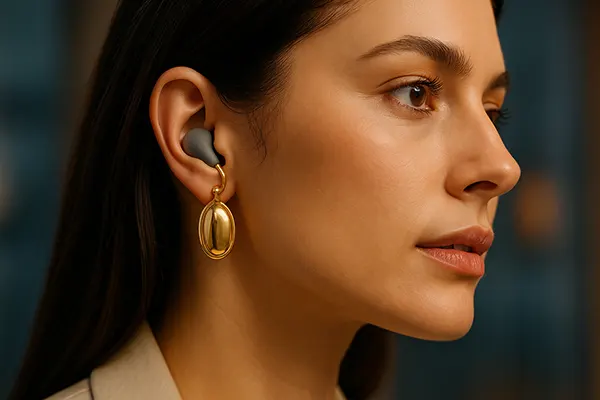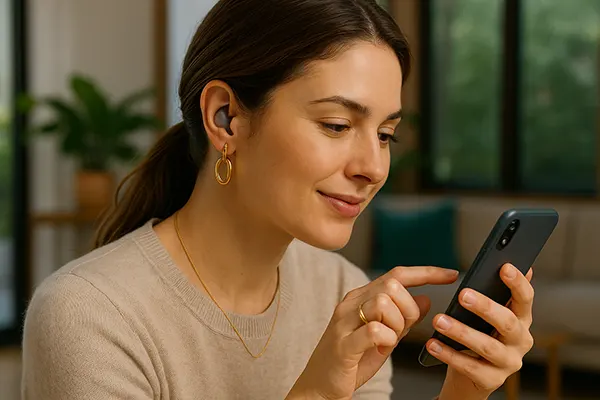Jewellery as the New Frontier of Wearables: Analysing the Rise of Earable Technology

The landscape of wearable devices has expanded far beyond wristbands and smartwatches. In 2025, a growing segment of innovation is centred on jewellery-inspired wearables, with earable technologies leading the way. These compact yet sophisticated devices combine style with advanced functionality, appealing to consumers who value both aesthetics and practicality. By examining the rapid growth of this sector, it becomes clear that earables are shaping the future of personal technology.
The Emergence of Earable Devices
Earable technology refers to intelligent in-ear devices that offer more than just sound. While wireless earbuds remain the most recognised form, companies are increasingly integrating sensors for biometric monitoring, real-time translation, and personalised health feedback. This transformation highlights the convergence of consumer electronics with fashion accessories.
Market leaders such as Apple, Samsung, Bose, and smaller start-ups have been experimenting with functions that extend well beyond traditional audio. Earables now incorporate features like continuous heart-rate monitoring, blood oxygen measurement, and adaptive noise control. These capabilities provide users with a holistic experience that addresses entertainment, health, and productivity.
In addition, design is becoming a central selling point. Unlike bulky headsets, earables resemble minimalist jewellery, making them attractive to a wider audience. Luxury brands are also entering the field by partnering with tech firms to produce limited-edition designs that merge advanced features with high-end aesthetics.
Consumer Demand and Lifestyle Integration
The appeal of earables lies in their seamless integration into daily life. Fitness enthusiasts appreciate the ability to track performance metrics without wearing large devices, while office workers use real-time translation features to collaborate across languages. This multifunctionality is key to the rapid adoption of these devices.
Research from 2024 into consumer behaviour revealed that nearly 40% of wearable technology users preferred discreet devices that do not compromise style. Earables answer this demand by combining practicality with elegance, effectively bridging the gap between personal technology and fashion.
As more people embrace hybrid working and digital communication, the convenience of earables becomes increasingly relevant. Their discreet form factor allows for continuous use throughout the day, ensuring both functionality and comfort without drawing unnecessary attention.
Health and Wellness Applications
One of the strongest growth areas for earable technology lies in health and wellness. Unlike smartwatches, which require constant wrist contact, earables can measure metrics directly from the ear canal, often delivering more accurate readings. This has attracted attention from healthcare providers and researchers.
In 2025, leading earable models are capable of monitoring blood pressure trends, detecting early signs of hearing loss, and even offering stress management tools through guided breathing exercises. These health-driven functions have positioned earables not just as consumer gadgets but also as valuable companions in preventive healthcare.
The potential extends to medical-grade applications. Clinical trials are currently underway to test earables for conditions such as sleep apnoea, where accurate and non-invasive monitoring is essential. If successful, such devices could reduce reliance on bulky medical equipment.
Collaboration Between Technology and Healthcare
Partnerships between technology companies and healthcare organisations are a defining trend in the earable sector. Firms like Valencell and Sonion are actively working with hospitals and universities to validate sensor accuracy and usability in clinical settings. These collaborations ensure that products are not only appealing but also medically reliable.
The integration of artificial intelligence further enhances the role of earables in healthcare. By analysing collected biometric data, AI-driven platforms can deliver personalised insights, helping users adopt healthier habits and flagging anomalies for professional review. This represents a significant step towards preventative and personalised medicine.
From a consumer perspective, these developments inspire greater confidence in the reliability of wearable health devices. As certification standards evolve, earables are likely to become trusted tools recommended by health professionals, moving beyond lifestyle accessories to recognised medical aids.

Market Outlook and Future Innovations
Industry forecasts suggest that the global earable market will surpass £30 billion by 2028, fuelled by consumer demand and technological breakthroughs. With the integration of new sensors and AI capabilities, these devices are expected to become indispensable personal companions.
Future innovations are likely to focus on enhanced gesture control, where users can operate devices with subtle facial movements, and brain-computer interfaces that open possibilities for advanced accessibility solutions. These developments indicate that earables may soon serve as gateways to next-generation human-computer interaction.
Another promising direction is sustainability. As environmental awareness grows, manufacturers are adopting recycled materials, longer-lasting batteries, and repair-friendly designs. This approach not only reduces ecological impact but also strengthens consumer trust in responsible technology.
The Role of Fashion and Personalisation
Fashion continues to play an important role in the success of earables. Brands are offering customisable designs, from interchangeable casings to gemstone-inspired finishes, allowing users to match technology with personal style. This strategy significantly widens the appeal of earables beyond tech enthusiasts.
Personalisation also extends to software. Adaptive soundscapes, language settings, and wellness goals can now be fine-tuned through dedicated applications, ensuring a highly individual experience. This combination of aesthetic choice and technological customisation makes earables unique in the wearable sector.
Looking ahead, jewellery-inspired wearables may evolve into cultural symbols, reflecting not only innovation but also lifestyle identity. As consumers continue to seek technology that blends seamlessly with daily routines, earables stand as a prime example of this integration.
